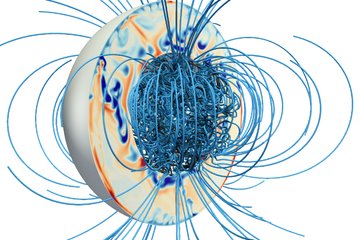All genres
21.
Journal Article
Analysis of full-disc Ca II K spectroheliograms III. Plage area composite series covering 1892–2019. Astronomy and Astrophysics 639, A88 (2020)
22.
Journal Article
Historical solar Ca II K observations at the Rome and Catania observatories. Nuovo Cimento della Societa Italiana di Fisica C-Geophysics and Space Physics 42 (1), 5 (2019)
23.
Journal Article
Analysis of full disc Ca II K spectroheliograms: II. Towards an accurate assessment of long-term variations in plage areas. Astronomy and Astrophysics 625, A69 (2019)
24.
Journal Article
Delving into the Historical Ca ii K Archive from the Kodaikanal Observatory: The Potential of the Most Recent Digitized Series. Solar Physics 294 (10), 145 (2019)
25.
Journal Article
Recovering the unsigned photospheric magnetic field from Ca II K observations. Astronomy and Astrophysics 626, A114 (2019)
26.
Journal Article
Analysis of full disc Ca II K spectroheliograms: I. Photometric calibration and centre-to-limb variation compensation. Astronomy and Astrophysics 609, A92 (2018)
27.
Journal Article
New reconstruction of the sunspot group numbers since 1739 using the direct calibration and “backbone” methods. Astronomy and Astrophysics 602, A69 (2017)
28.
Journal Article
Dependence of the sunspot-group size on the level of solar activity and its influence on the calibration of solar observers. Solar Physics 291, pp. 3793 - 3805 (2016)
29.
Conference Paper
Exploiting four historical Ca II K spectroheliogram archives. Publications of the astronomical society of the pacific 504, pp. 227 - 231 (2016)
30.
Talk
Connecting chromospheric emission to photospheric magnetic field. AG 2017, Göttingen, Germany (2017)
31.
Talk
Relating photospheric magnetic field to Ca II K intensity. Rocks \& Stars II, Göttingen, Germany (2017)
32.
Talk
New calibration of the group sunspot number series using a non-linear non-parametric method. DPG-Frühjahrstagung, Bremen (2017)
33.
Talk
Examination of historical spectroheliogram archives. Space climate symposium 6, Levi, Finland (2016)
34.
Talk
The potential of historical spectroheliograms for Sun-climate studies. 9th IAGA - ICMA/IAMAS - ROSMIC/VarSITI/SCOSTEP workshop on long-term changes and trends in the atmosphere, Kühlungsborn, Germany (2016)
35.
Talk
Exploring historical Ca II K spectroheliogram archives. XIVth Hvar astrophysical colloquium, Hvar, Croatia (2016)
36.
Talk
Non-linear re-calibration of group sunspot number series back to 1739. AGU Fall Meeting, San Francisco, USA (2016)
37.
Talk
Reconstructions of past solar irradiance. International Space Climate Symposium-6, Levi, Finland (2016)
38.
Poster
Handling historical Ca II K spectroheliogram observations. AGU Fall Meeting, San Francisco, USA (2016)











